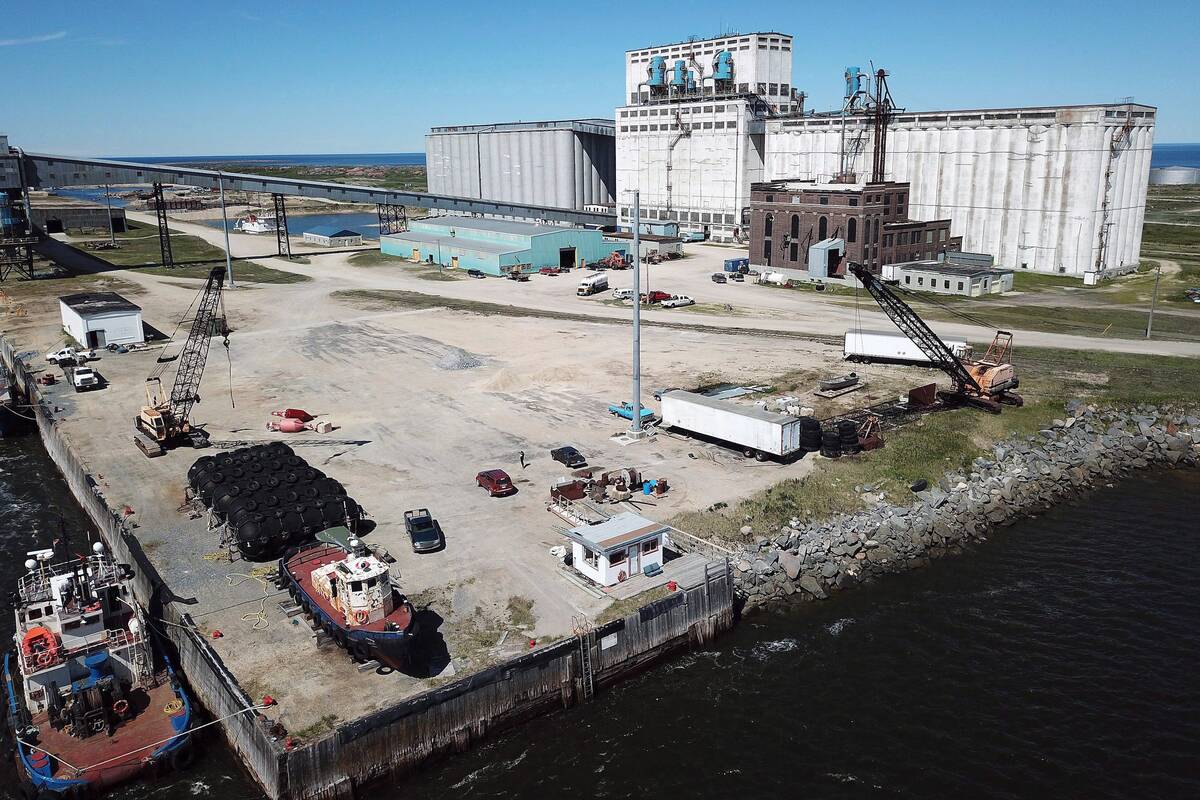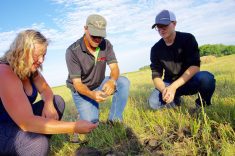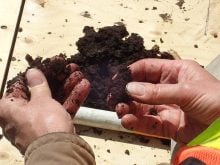A lot of architecture is about bearing weight and many of the buildings on your property do this with two basic shapes.
The triangle, that you see in your rafters, or the arch, as in the double 2×4 header over your garage door, are important weight distributors. They allow you to have large amounts of space within a thin, weight-bearing structure.
Soil architecture is as much about biology and chemistry as it is about geometry. South Dakota USDA ARS research agronomist Shanon Osborne will say she’s not a soil engineer but she can tell you a few things about how important biology is to soil architecture. She and some colleagues did some field studies with cover crops and found how they can enhance soil structure and improve weight-bearing capacity.
Read Also

Sizing up Port of Churchill expansion challenges
The Port of Churchill has some hurdles to clear before it can become the sea trade powerhouse for Manitoba and Canada that governments and the agricultural industry hope it will.
“My research does not focus on compaction but it does focus on soil health and production practices that improve soil health,” she said during the recent Northern Soil Compaction conference. “We want to increase soil biology because soil biology helps form the aggregates that give you better soil structure.”
Soil aggregates are a combination of mineral particles held together with organic matter in block-like packages. You tend to find them in the undisturbed soils that build over time under forests or grassland. They’re often a good indicator of soil health and it tends to suffer under tillage. Osborne thought cover crops might provide a biological medium that would benefit soil aggregation and wondered if cover crops could make a difference.
She ran an experiment to see how different cover crops might affect the soil-bearing strength under different moisture levels and different tillage conditions. She worked with Dan Humburg and Tom Schumacher, both professors at South Dakota State University. They brought their expertise in soil biophysics and engineering to work with her understanding of soil ecology.
The idea was to look at how much force the soil could bear before its structure failed. They designed a hydraulic press that would put pressure on the soil and recorded the point of failure in pounds per square inch (psi).
“It was mounted on the back of a tractor and we pressed it into the ground,” she said. “We measured the amount of force that it took to press this plate into the ground and then, once the soil failed, it measured the depth, in inches, at which it failed.”
They did what was called a randomized complete block design with different plots where they grew different cover crops. They had sweet clover, hairy vetch and a spring wheat stubble. They had some sub plots that were disturbed using a small tillage operation versus other undisturbed plots that they left alone.
“We had four different moisture levels,” Osborne explained. “We had dry, we had moist, we had field capacity and then we had a saturated soil condition. The cover crops were planted in the spring into the standing wheat stubble and they were allowed to grow until the end of June and that’s when we measured soil-bearing strength and soil compaction.”
They found a relationship between the presence of cover crops and the amount of pressure required to compact the soil. Tilled soil was most easily and deeply compacted.
“When we have a cover crop it’s still a very similar trend to what we had before but it’s taking more pressure to do that,” she said. “So we’re adding strength to that soil and making it less likely to be compacted.”
Part of it is the root system within the soil. Another part of it was the biomass the plants produced above the ground. It also helped to bear the weight of anything on top of it.
“As you guys know if you walk into a tilled field and it’s just rained you’re going to sink more than if you’re walking into the ditch where you have grass with that vegetation on top,” she said. “It’s the same principle and cover crops have all those other benefits. They also can have benefits with compaction.”
So it seems that a large part of healthy soil is having roots in the ground but it’s also important to have foliage over that to help bear the weight. Good soil management takes place both above and below the soil surface and this is because of the living biota on both sides.
“We spend a lot of time looking at mycorrhizal fungi and mycorrhizal fungi and those fungi are very important in building soil structure and soil structure is fundamental in compaction,” Osborne said. “These fungi have a big impact on soil aggregation and forming aggregates.”
These fungi produce very fine hyphae, much finer than plant root hairs. They can move through small spaces within the soil producing an extensive network. These hyphae make a coating called glomalin that helps contain water or nutrients moving through them. As the hyphae mature they slough off the glomalin which actually remains in the soil, almost like a glue that binds soil particles together. They’re important in constructing those soil aggregates that add the structural stability to the soil.
“This is just one part of a system in which we have healthy soils and one more reason why producers should look at utilizing conservation tillage practices and adding cover crops. Osborne concluded. “Cover crops add diversity to the system, they help feed the microbes, and they can help alleviate compaction problems.”















